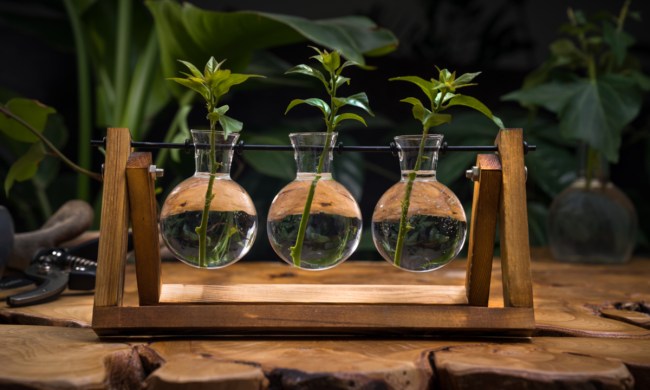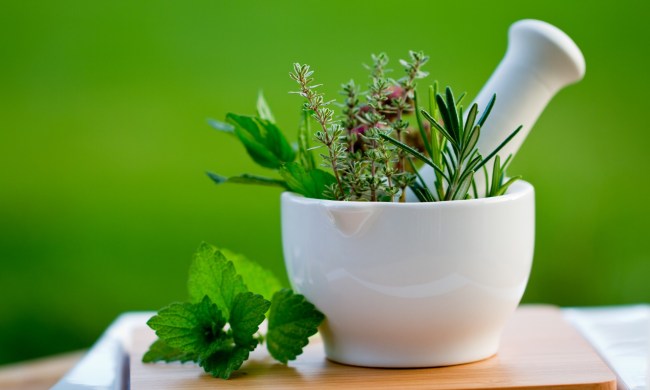
Herbs have been prized since ancient times for their aromatic fragrances, healing potential, and great taste. Nearly every meal imaginable can be enhanced with a combination of either dried or fresh herbs. If you are thinking about growing herbs, you will be happy to know they are generally very easy to take care of!
There are hundreds of different herbs that thrive in greenhouses. From classic meal staples like rosemary and basil to medicinal herbs like chamomile and ginseng, you can have a lush herb greenhouse garden. If you are considering adding some medicinal or edible herbs to your greenhouse, here’s the inside scoop so you can reap the sweet reward of these potent botanicals.

Why should you grow herbs?
Today, many people love to grow their own herbs to be used in the creation of beauty products such as lip balms, moisturizers, shampoos, and much more. Some even love to grow herbs to create household items such as air fresheners.
Herbs can be used to assist many things that will improve your quality of life such as:
- Providing vital nutrient support and supplementation benefits
- Flavor enhancement of your home-cooked meals
- Hair, skin, and dental benefits
- Anti-inflammatory properties
- Improved cholesterol profiles
- Improved circulation
- Immune-system support
- Anticancer properties
- Antimicrobial properties
- Enhanced mood and well-being
All said, there are many incredible benefits that you can derive from growing your own herbs in a greenhouse. Growing herbs is a wonderful way to create high-quality plant-based therapies and foods that you and your family will love. Species such as rosemary, lavender, and basil are extremely easy to grow and provide a tremendous wealth of benefits for the mind, body, and spirit.

What herbs grow well in a greenhouse?
There is a huge variety of herbs to choose from when it comes to planning the herb section of your greenhouse garden. Herbs such as rosemary, lavender, marjoram, basil, thyme, oregano, parsley, chives, and mint can all do quite well under the warm, controlled temperature of your special grow space.
While the growing specifics can differ from species to species, generally most herbs thrive in warm and dry weather. This makes it quite easy to provide them a stable and supportive environment using a heat-controlled space such as a greenhouse.

Can you grow herbs in a greenhouse in winter?
As long as your greenhouse is heated, you can definitely grow herbs throughout the winter months. If you are available to provide a partially heat-controlled environment, using a greenhouse on a balcony for instance, it can definitely be a great way to extend your growing season.
Overwintering is the process of protecting plants such as your herb garden so they can be replanted in the spring once the thaw arrives and temperatures become more mild. Even an unheated but well-protected and insulated greenhouse can be useful for helping preserve plants during the coldest and least-hospitable times of the year.
Many herbalists without access to heated greenhouses try to grow an excess of herbs during the warmer months. Many of these powerful plants can be frozen, preserved dried, or placed in oils to extend the length of time they will last.

Can you grow rosemary in a greenhouse?
Rosemary has many varieties that will absolutely thrive under greenhouse conditions. Your space will need to provide well-drained soil with a temperature around 65 F to 75 F. You might be able to get away with temperatures slightly above or below that, but generally these are the ideal conditions to strive for when planning for the temperature of your greenhouse.

Can you grow basil in a greenhouse?
Basil is another herbal powerhouse that absolutely loves to be grown under the controlled conditions of a greenhouse. Basil thrives in places where it is warmer. As a result, you will need your greenhouse to be able to support a temperature of at least 50 F for this staple of Italian cuisine to flourish. Many gardeners start their basil in greenhouses during the winter and then transfer them outside when the last spring thaws have passed and spring is starting to return to the land.

How to set up your greenhouse
When setting up your small herb greenhouse, you want to make sure your plants can be easily accessed for both care and harvesting. You don’t want to trample plants when trying to harvest one in the middle, so try to set up your space accordingly. A good rule of thumb is to maintain a two-foot-wide path that you can easily walk through, but one foot will do depending on how you arrange your space and what you set up.
If all you want is a space to grow herbs, have at it! Set things up where they fit and where you want them; however, you should try to keep the same/similar herbs together so you don’t have to chase down five different batches of basil to water. If you’d like, you could spruce up your herb greenhouse by adding a unifying element. You could try one or two kinds of flowers to grow alongside your herbs to give the space a pop of color.
In outdoor gardens, many gardeners will opt for a larger herb plant to be the focal point of the space. You could do something like that in your greenhouse, as well, perhaps by setting up a large potted rosemary in the back in full view of the door. Keep in mind that whatever you choose for a focal point should still be accessible for watering and/or harvesting, no matter how you lay it out.

How often should you water your herb greenhouse garden?
Each plant in your greenhouse will have specific needs, which is why it’s best to keep similar herbs grouped together. Not only will you not have to search all over your greenhouse for that missing thyme plant, you’ll have an easier time remembering what plants require what amount of water. In small herb greenhouses, you can easily maintain this yourself. In larger ones, it may be best to set up a greenhouse watering system to help you. Just be sure to pay attention to each plant and what it needs, and you’ll be OK!
Growing herbs in a greenhouse is a good way to have a fresh supply year-round or even just during colder months when it’s hard to keep herbs alive in your living space. As long as you maintain your space, design your layout to be easily accessible, and care for your herbs, you should have a bountiful harvest.

Can you grow herbs in a greenhouse all year long?
While greenhouses are known to be useful tools for keeping your plants warm in winter, they can also provide benefits to your plants year-round! Some gardeners prefer to move plants in and out of greenhouses as the seasons change, which can help make the most of limited space. However, you don’t have to move your herb greenhouse garden if you don’t want to. Greenhouses provide a sheltered and controlled environment for plants during any season. This is especially useful if you live in an area prone to storms or high winds, as the greenhouse will keep your herbs safe. The only note to make is that greenhouses can overheat during summer. To avoid this, add or open ventilation in the roof or sides to allow air flow. Most greenhouses have some windows or panels that open for this specific reason, but if yours doesn’t you can also just leave the door open.
Fresh herbs are a real treasure for the senses. They smell lovely, taste great, and vitalize many of the body’s essential systems. In short, they are nutrient powerhouses that really deserve a place in your greenhouse. Herbs very typically thrive in warmer conditions. While there are species and varieties that can handle the cold, many of the most well-known and popular ones will really require a warm, heat-controlled environment to be able to thrive year-round in colder climates.


